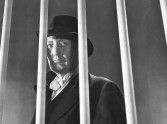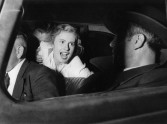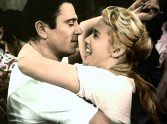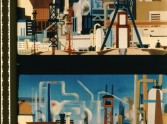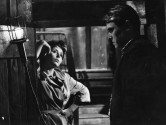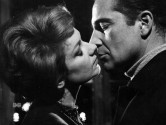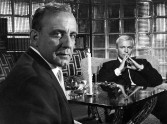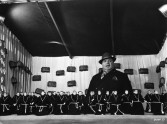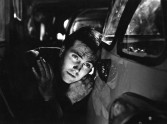
The Glass Tower
(Der gläserne Turm)
With Lilli Palmer, O.E. Hasse, Peter van Eyck.
West Germany, 1957, DCP, black & white, 104 min.
German with English subtitles.
DCP source: F.W. Murnau Siftung
1957 was a key year for West German cinema. Major industry auteurs, as well as outside figures like Ottomar Domnick (Jonas), decisively moved into more modern artistic directions; this year alone merits a whole retrospective. But then again… maybe Der gläserne Turm, one of the most erratic works of the era, contains it all. The film holds a special place in the annals of Federal Republic cinema as the lone work of a seminal figure of German-style literary modernism: Wolfgang Koeppen, one of the writers (of course, he hated the film). Formally, the film is as perplexing as the design of its main set: industry leader Robert Fleming’s loft overlooking Berlin (West). Storywise, it’s up to the minute: Katja Fleming refuses to obey her husband Robert any longer; the year saw the annulation of a Wilhelminian era-law on these matters (that’s the genius of zeitgeist for you). That Katja is a retired actress who—seduced by a play written specially for her by returnee John Lawrence—wants to return to the stage for others, and not only for Robert, adds a fascinating level of artistic self-reflection to the mix. That the story, two-thirds of the way in, suddenly turns from vulgar Bergmanian psychodrama into a Krameresque courtroom thriller with a twisted happy end plus a weird comic interlude might suggest how bizarre the FRG’s dream life really was. (And to ease the way into this world: another piece of modern music for eyes and ears by Franz Schömbs.)
PRECEDED BY
-
The Birth of Light (Die Geburt des Lichts)
Directed by Franz Schömbs.
West Germany, 1957, 35mm, color, 11 min.
German with English subtitles.
Print source: Deutsches Filminstitut

